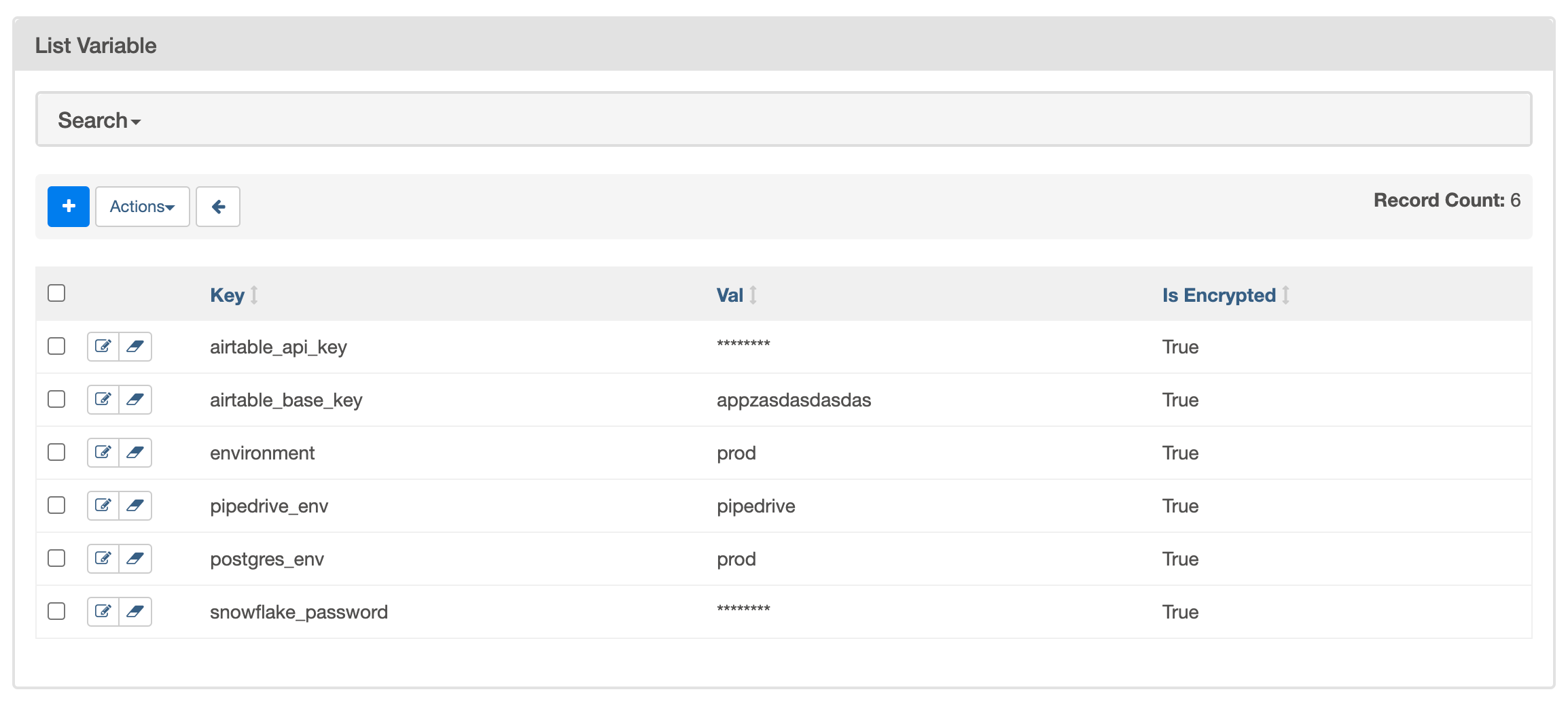Managing Variables
Variables are a generic way to store and retrieve arbitrary content or
settings as a simple key value store within Airflow. Variables can be
listed, created, updated and deleted from the UI (Admin -> Variables),
code or CLI.

See the Variables Concepts documentation for more information.
Storing Variables in Environment Variables
Added in version 1.10.10.
Airflow Variables can also be created and managed using Environment Variables. The environment variable
naming convention is AIRFLOW_VAR_{VARIABLE_NAME}, all uppercase.
So if your variable key is foo then the variable name should be AIRFLOW_VAR_FOO.
For example,
export AIRFLOW_VAR_FOO=BAR
# To use JSON, store them as JSON strings
export AIRFLOW_VAR_FOO_BAZ='{"hello":"world"}'
You can use them in your Dags as:
from airflow.sdk import Variable
foo = Variable.get("foo")
foo_json = Variable.get("foo_baz", deserialize_json=True)
Note
Single underscores surround VAR. This is in contrast with the way airflow.cfg
parameters are stored, where double underscores surround the config section name.
Variables set using Environment Variables will also
take precedence over variables defined in the Airflow UI.
Visibility in UI and CLI
Variables defined through environment variables are not displayed in the Airflow UI or listed using airflow variables list.
This is because these variables are resolved dynamically at runtime, typically on the worker process executing your task. They are not stored in the metadata database or loaded in the webserver or scheduler environment.
This supports secure deployment patterns where environment-based secrets (e.g. via .env files, Docker, or Kubernetes secrets) are injected only into runtime components like workers — and not into components exposed to users, like the webserver.
If you want variables to appear in the UI for visibility or editing, define them in the metadata database instead.
Exporting variables to file
You can export variables stored in the database (e.g. for migrating variables from one environment to another) using the local CLI. Run airflow variables export on the Airflow server. See Command Line Interface and Environment Variables Reference for complete command reference.
Note
Variable export is only available via local CLI for security reasons. The UI/API cannot export sensitive values to maintain the Airflow 3 security model. See Airflow Security Model for details.
Securing Variables
Airflow uses Fernet to encrypt variables stored in the metastore database. It guarantees that without the encryption password, content cannot be manipulated or read without the key. For information on configuring Fernet, look at Fernet.
In addition to retrieving variables from environment variables or the metastore database, you can enable a secrets backend to retrieve variables. For more details see Secrets Backend.